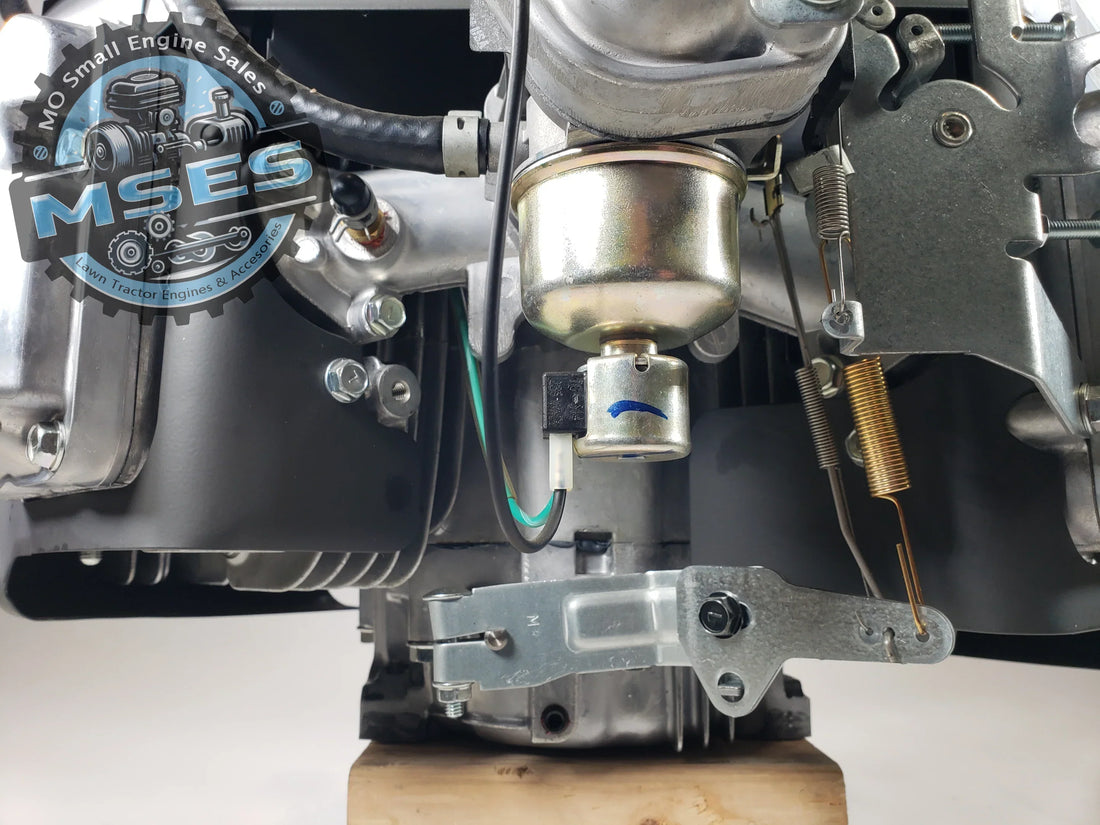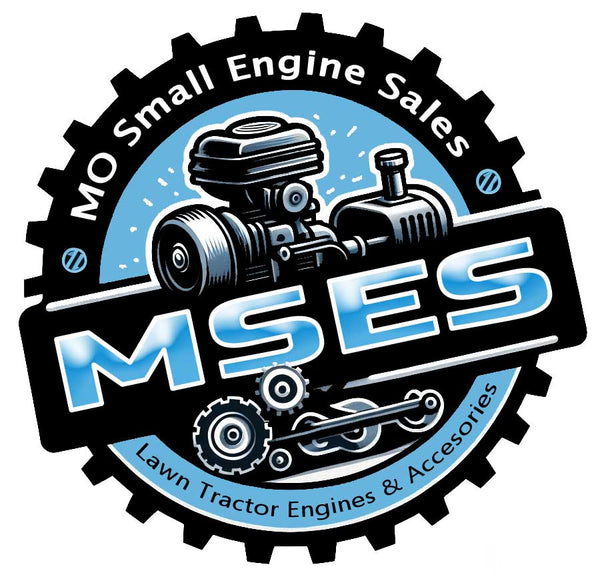
5 Signs It’s Time to Replace Your Vertical Shaft Engine
Share

- Lawn mowers
- Pressure washers
- Generators
- Other outdoor equipment
These compact powerhouses are designed to deliver reliable performance season after season. But like any mechanical component, they have a finite lifespan. Recognizing the signs of engine wear can help you avoid unexpected breakdowns and costly repairs.
Ready to learn when it's time for a replacement? We've compiled 5 key indicators that signal your vertical shaft engine might be ready for retirement. Let's dive into these telltale signs to help you make an informed decision about your equipment's future.
1. Loss of Power
Is your lawnmower struggling to cut through grass that it used to handle with ease? A noticeable drop in power is one of the most telling signs that your vertical shaft engine needs replacement.
When an engine loses power, you'll experience:
- Slower cutting speeds - What used to take 30 minutes now requires an hour
- Rough operation during normal tasks
- Increased fuel consumption as the engine works harder
- Difficulty handling thick grass or heavy loads
- Inconsistent performance across different operating conditions
- Worn piston rings failing to maintain proper compression
- Damaged valves not sealing correctly
- Scored cylinder walls reducing engine efficiency
- Clogged or deteriorated fuel systems restricting proper flow
- Carbon buildup on internal components
A simple compression test can reveal the extent of internal wear. Healthy vertical shaft engines typically show readings between 90-100 PSI. Readings below 70 PSI indicate significant wear and potential need for replacement.
You might notice the power loss gradually worsen over time. What starts as slightly slower operation can progress to an engine that barely functions. This degradation typically accelerates as worn components create a cascade effect, causing additional stress on other engine parts.
Regular maintenance can help prevent premature power loss, but once internal wear becomes severe, replacement often proves more cost-effective than attempting repairs.
2. Excessive Vibrations
Is your lawn mower shaking like it's about to take off? Excessive vibrations in your vertical shaft engine aren't just annoying - they're a serious warning sign that shouldn't be ignored.
Engine mounts play a crucial role in your engine's operation. These rubber-based components act as shock absorbers, keeping your engine stable and reducing vibration transfer to other parts of your equipment. When working properly, they create a smooth, controlled operation that protects both the engine and operator.
Here's what might be causing those troublesome shakes:
- Worn Engine Mounts: After extended use, rubber mounts can deteriorate, crack, or completely separate, leading to increased vibration
- Loose Mounting Bolts: Regular operation can cause mounting hardware to loosen over time
- Internal Component Issues:
- Bent or damaged crankshaft
- Worn bearings
- Unbalanced blade assembly
- Damaged cooling fins
- Visible cracks or tears in the rubber
- Signs of separation between the rubber and metal components
- Excessive movement when the engine is running
- Oil-soaked mounts (which can accelerate deterioration)
3. Oil Leaks
Is your vertical shaft engine leaving mysterious puddles underneath? Oil leaks are a clear sign of engine wear that shouldn't be ignored. These annoying drips can indicate serious internal problems that might require an engine replacement.
Common Causes of Oil Leaks:
- Deteriorated gaskets and seals
- Cracked engine block
- Loose or damaged oil drain plug
- Worn valve cover gaskets
- Damaged oil pan
A small oil spot might seem harmless, but it can quickly turn into a major problem. When gaskets and seals age, they become brittle and lose their ability to maintain a proper seal. This deterioration allows oil to seep through gaps and cracks, compromising your engine's lubrication system.
Warning Signs to Watch For:- Dark stains on your driveway or storage area
- Burning oil smell during operation
- Decreased oil levels between changes
- Visible oil residue on engine components
- Smoke from the engine
While some minor leaks can be fixed by replacing individual gaskets or seals, persistent leaks often indicate deeper issues. When multiple seals fail at the same time or the engine block develops cracks, repair costs can exceed the value of a replacement engine.
Critical Inspection Points:
- Check the area around valve covers
- Examine the oil pan seams
- Inspect the crankshaft seals
- Look for oil residue on engine mounts
- Monitor oil consumption rates
4. Unusual Noises
Your vertical shaft engine communicates through various sounds, some of which may indicate serious internal damage. Let's decode these warning signals.
Common Warning Sounds to Watch For:
- Knocking: A rhythmic, metallic knock often signals worn connecting rods or crankshaft bearings
- Rattling: Loose or damaged components creating a chaotic sound, particularly during operation
- Clicking: Might indicate valve train issues or problems with the timing mechanism
- Grinding: Often related to damaged bearings or metal-on-metal contact
- Screeching: Could signal belt problems or failing pulleys
These sounds typically intensify during engine operation or under load. A properly functioning vertical shaft engine should run with a consistent, smooth sound. Any deviation from this normal operating sound deserves immediate attention.
Location Matters: The source of the noise can help identify the problem:
- Upper Engine: Valve train issues, rocker arms, or push rod problems
- Middle Engine: Piston or connecting rod troubles
- Lower Engine: Crankshaft or bearing complications
Ignoring these warning sounds can lead to catastrophic engine failure. A minor clicking today could become a seized engine tomorrow. The cost of repairs typically increases the longer you wait, and in many cases, these sounds indicate internal damage that's beyond economical repair.
Think of these noises as your engine's distress signals. Just like a squeaking brake or a rattling door, these sounds won't fix themselves - they'll only get worse with time. When you notice persistent unusual noises, especially if they're getting louder or more frequent, it's time to consider a replacement.
5. Difficulty Starting or Stalling Issues
Is your vertical shaft engine struggling to start or randomly shutting down during operation? These frustrating symptoms often signal serious underlying issues that might require engine replacement.
Common Starting Problems:
- Engine requires multiple pull attempts before starting
- Starter motor cranks but engine won't turn over
- Engine only starts with starting fluid
- Excessive smoke during startup
Stalling Patterns to Watch For:
- Random shutdowns during normal operation
- Engine dies when changing speeds
- Stalling under heavy loads
- Rough idling followed by complete shutdown
The root causes of these issues typically stem from:
Fuel System Problems
- Clogged fuel lines
- Failing fuel pump
- Deteriorated carburetor components
- Contaminated fuel tank
Ignition System Failures
- Worn spark plugs
- Faulty ignition coil
- Damaged flywheel key
- Compromised electrical connections
While some starting and stalling issues can be fixed with basic maintenance, persistent problems often indicate severe internal damage. A professional diagnosis might reveal worn-out pistons, damaged valves, or a compromised crankshaft - all expensive repairs that could exceed the cost of a new engine.
Pro Tip: Keep a maintenance log of starting difficulties and stalling incidents. This information helps identify patterns and can determine whether repairs or replacement is the most cost-effective solution.
When starting problems and stalling issues become frequent occurrences, it's crucial to evaluate the overall condition of your engine and consider replacement before complete failure leaves you stranded mid-task.
Additional Considerations for Engine Replacement
A malfunctioning governor system presents serious safety concerns that often necessitate immediate engine replacement. The governor's primary role is regulating engine speed - when it fails, your engine can experience dangerous, uncontrolled acceleration. You might notice:
- Sudden speed surges during operation
- Engine racing beyond normal RPM limits
- Inconsistent power output
- Violent vibrations at higher speeds
Compression issues represent another critical factor in engine health. A compression test can reveal the internal condition of your engine:
Normal Compression Readings:
- New engines: 150+ PSI
- Used engines: 100-130 PSI
- Critical level: Below 90 PSI
- Increased oil consumption
- White/blue exhaust smoke
- Reduced power output
- Hard starting conditions
Old Age and Wear: A Cost-Effective Reason for Replacement
- Usage Hours: Most vertical shaft engines are designed to operate between 500-1000 hours under ideal conditions
- Maintenance History: Regular oil changes, air filter replacements, and proper storage significantly impact longevity
- Rust formation on metal components
- Corrosion in fuel system parts
- Brittle rubber seals and gaskets
- Metal fatigue in critical components
- Worn bearing surfaces
- Decreased Fuel Efficiency: Aging engines typically consume more fuel to perform the same tasks
- Higher Maintenance Costs: Frequent repairs become necessary as parts wear out
- Reduced Reliability: Unexpected breakdowns become more common
- Safety Concerns: Worn components can fail suddenly during operation
A proactive replacement strategy based on age can actually save money in the long run. When you factor in repair costs, lost time, and potential safety risks, investing in a new engine often proves more economical than maintaining an aging unit.
Consider replacing your engine if you notice:
- Extensive surface rust on engine components
- Green or white corrosion deposits on metal parts
- Crumbling rubber components
- Multiple repairs within a short timeframe
Conclusion
Knowing when to replace your vertical shaft engine can save you time, money, and frustration. By regularly checking your engine and addressing issues like power loss, vibrations, oil leaks, strange noises, and starting problems promptly, you can extend its lifespan.
Don't wait for your engine to break down completely. Being proactive with maintenance and replacing parts on time will ensure that your equipment works smoothly when you need it the most. This applies to all types of small engine equipment such as lawnmowers and generators.
If you're looking to upgrade your vertical shaft engine, we have a wide selection of top-quality engines and parts available. With over 20 years of experience and a focus on customer satisfaction, we are dedicated to helping you find the ideal replacement engine for your specific requirements.
Visit our store today to explore our competitive prices on trusted brands. Your equipment deserves reliable power.
